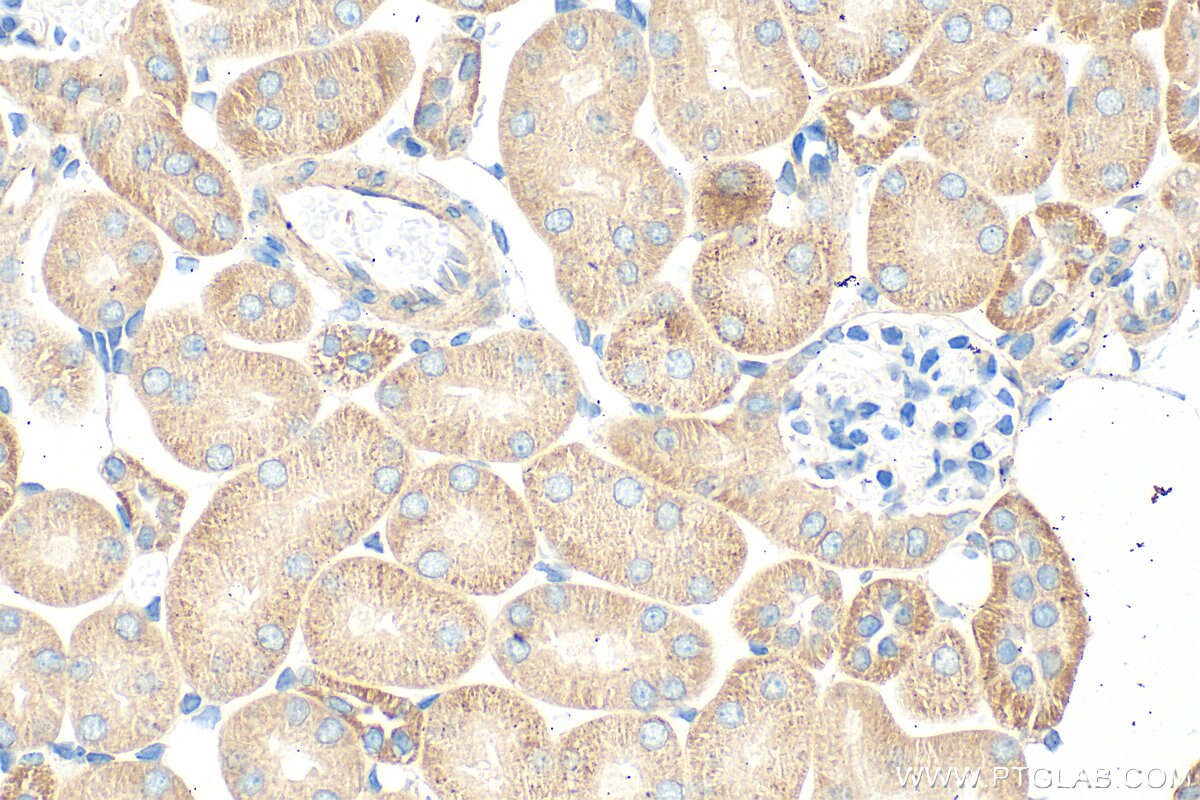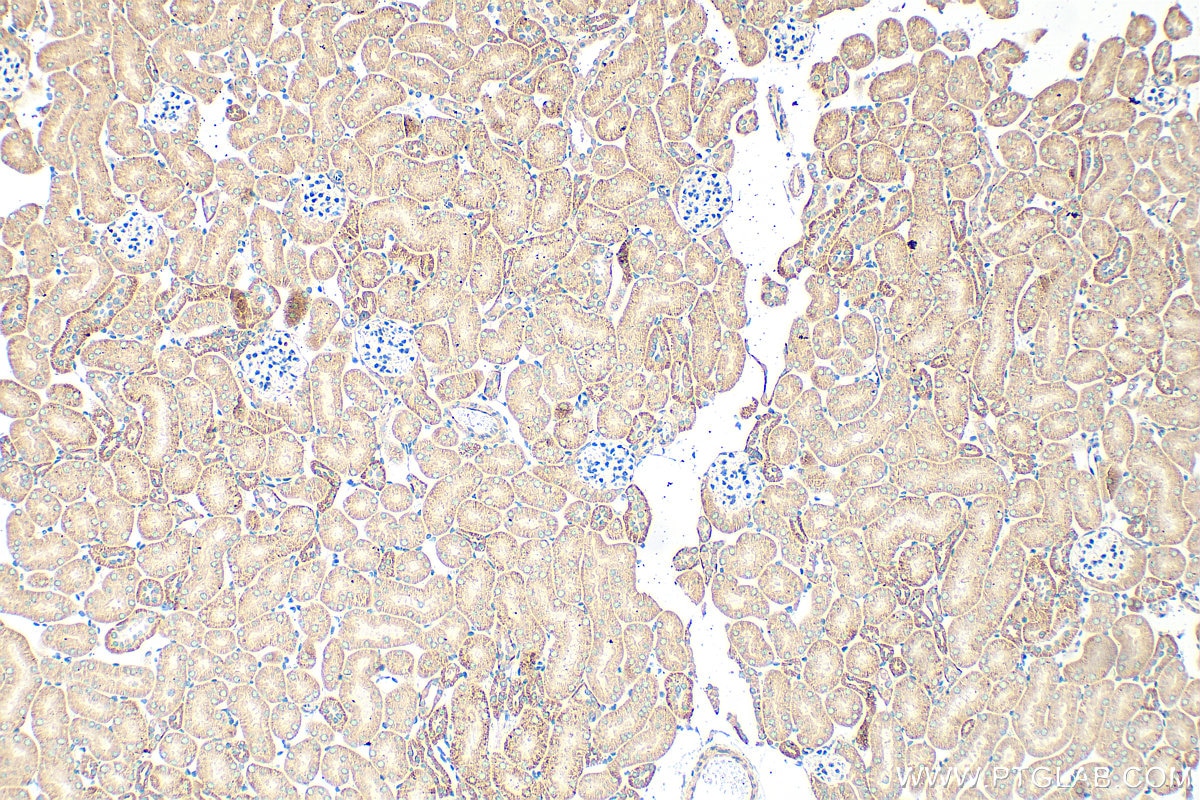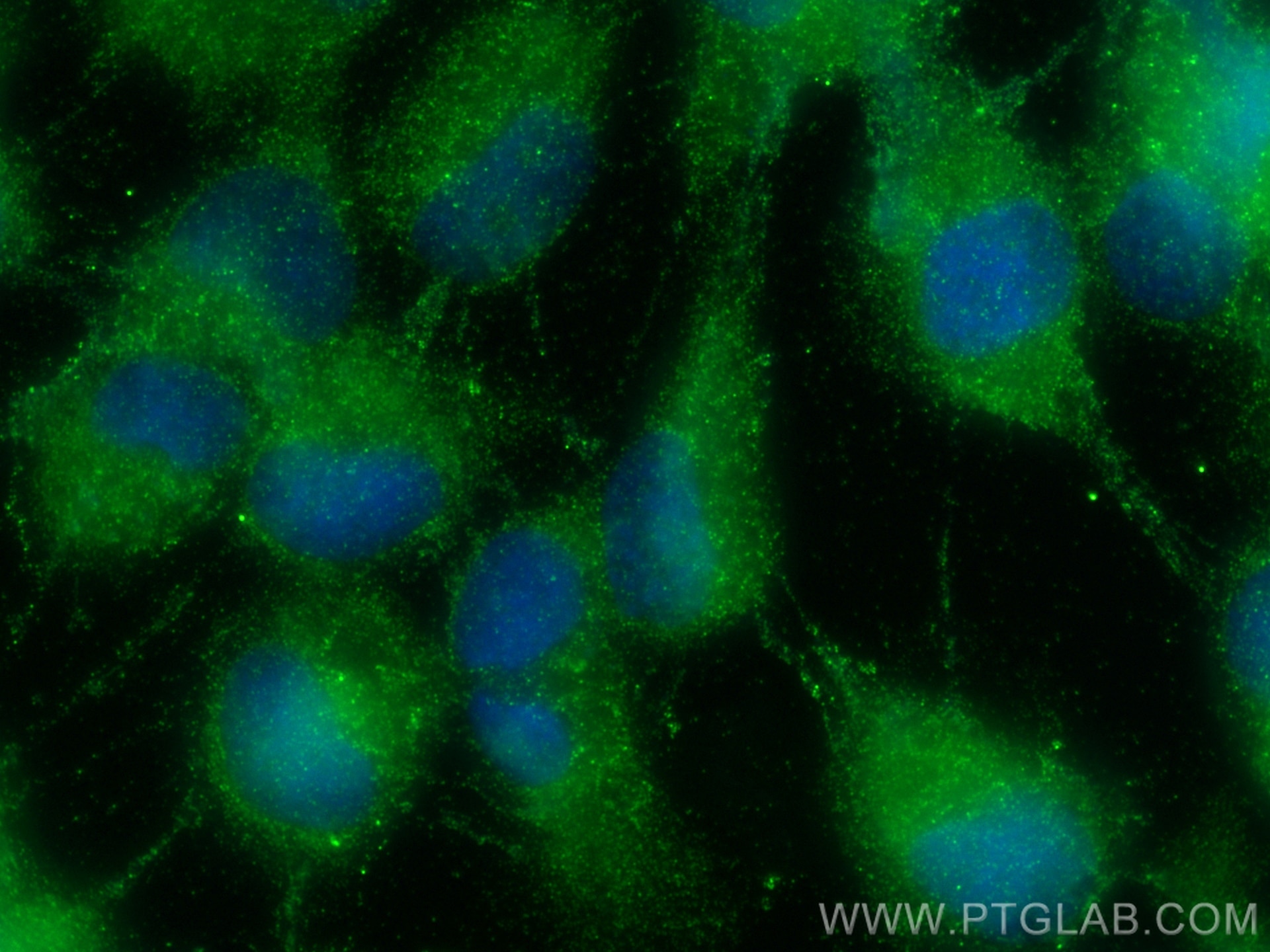Tested Applications
| Positive IHC detected in | mouse kidney tissue Note: suggested antigen retrieval with TE buffer pH 9.0; (*) Alternatively, antigen retrieval may be performed with citrate buffer pH 6.0 |
| Positive IF/ICC detected in | A431 cells |
Recommended dilution
| Application | Dilution |
|---|---|
| Immunohistochemistry (IHC) | IHC : 1:50-1:500 |
| Immunofluorescence (IF)/ICC | IF/ICC : 1:200-1:800 |
| It is recommended that this reagent should be titrated in each testing system to obtain optimal results. | |
| Sample-dependent, Check data in validation data gallery. | |
Product Information
16207-1-AP targets ALG14 in IHC, IF/ICC, ELISA applications and shows reactivity with human, mouse samples.
| Tested Reactivity | human, mouse |
| Host / Isotype | Rabbit / IgG |
| Class | Polyclonal |
| Type | Antibody |
| Immunogen |
CatNo: Ag9178 Product name: Recombinant human ALG14 protein Source: e coli.-derived, PGEX-4T Tag: GST Domain: 27-216 aa of BC011706 Sequence: RSMDVTPRESLSILVVAGSGGHTTEILRLLGSLSNAYSPRHYVIADTDEMSANKINSFELDRADRDPSNMYTKYYIHRIPRSREVQQSWPSTVFTTLHSMWLSFPLIHRVKPDLVLCNGPGTCVPICVSALLLGILGIKKVIIVYVESICRVETLSMSGKILFHLSDYFIVQWPALKEKYPKSVYLGRIV Predict reactive species |
| Full Name | asparagine-linked glycosylation 14 homolog (S. cerevisiae) |
| Calculated Molecular Weight | 216 aa, 24 kDa |
| GenBank Accession Number | BC011706 |
| Gene Symbol | ALG14 |
| Gene ID (NCBI) | 199857 |
| Conjugate | Unconjugated |
| Form | Liquid |
| Purification Method | Antigen affinity purification |
| UNIPROT ID | Q96F25 |
| Storage Buffer | PBS with 0.02% sodium azide and 50% glycerol, pH 7.3. |
| Storage Conditions | Store at -20°C. Stable for one year after shipment. Aliquoting is unnecessary for -20oC storage. 20ul sizes contain 0.1% BSA. |
Background Information
ALG14 (UDP-N-Acetylglucosaminyltransferase Subunit ALG14 Homolog) is a protein involved in the process of N-linked glycosylation, which is essential for protein folding and stability. ALG14 forms a heterodimeric UDP-N-acetylglucosamine transferase (GnTase) with ALG13, which catalyzes a key step in the synthesis of the lipid-linked oligosaccharide (LLO) precursor during N-linked glycosylation (PMID: 36200043).
Protocols
| Product Specific Protocols | |
|---|---|
| IF protocol for ALG14 antibody 16207-1-AP | Download protocol |
| IHC protocol for ALG14 antibody 16207-1-AP | Download protocol |
| Standard Protocols | |
|---|---|
| Click here to view our Standard Protocols |








